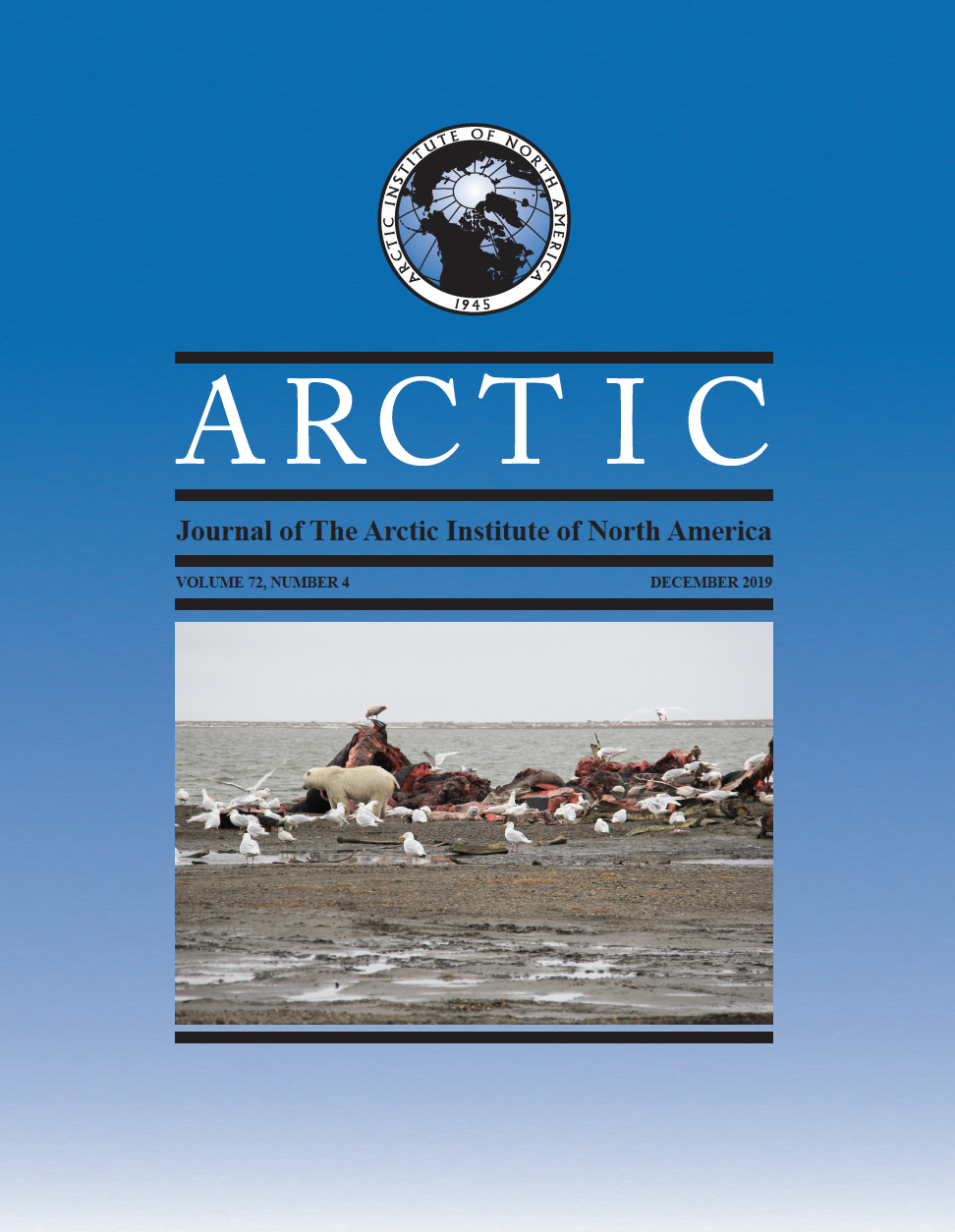Use of Subsistence-Harvested Whale Carcasses by Polar Bears in the Southern Beaufort Sea
DOI:
https://doi.org/10.14430/arctic69449Keywords:
bone pile; onshore behavior; polar bear; southern Beaufort Sea; <i>Ursus maritimus</i>; whale carcassAbstract
The availability of a food subsidy has the potential to influence the condition, behavior, fitness, and population dynamics of a species. Since the early 2000s, monitoring efforts along the coast of northern Alaska have indicated a higher proportion of polar bears (Ursus maritimus) of the southern Beaufort Sea (SB) subpopulation coming onshore to feed on subsistence-harvested bowhead whale (Balaena mysticetus) carcasses during the fall and early winter seasons. Concurrently, Indigenous communities annually hunt bowhead whale and deposit the unused remains at localized “bone piles,” creating the potential for human-bear interactions. Our objective was to determine the annual number of polar bears feeding at the bone pile near Kaktovik, Alaska. Using a hair snag surrounding the bone pile, we collected hair samples to identify individual bears via microsatellite genotypes during 2011 – 14. We used capture-mark-recapture data in the POPAN open-population model to estimate the number of bears visiting the bone pile. We estimated that as many as 72 (SE = 9) and 76 (SE = 10) male and female polar bears, respectively, used the bone pile located at Kaktovik, Alaska, in 2012, which represents approximately 16% of the SB polar bear subpopulation. It will be important to monitor the number of bears using the bone pile and subsequent human-bear interactions and conflicts along the northern coast of Alaska, if sea ice continues to recede.


